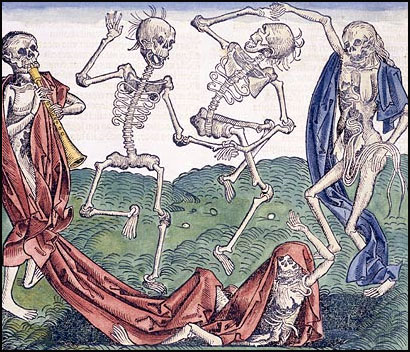We discuss the sweating sickness (and review wine) in the second episode of the Quacks Who Quaff podcast.
The history of medicine is littered with diseases which impacted on the course of humanity. The Black Death. Smallpox. Influenza. HIV/AIDS. Each one has left its own mark on our collective consciousness. And yet there is an often-overlooked addition to this list: sweating sickness. This disease tore its way through Tudor England, killing within hours, before disappearing as quickly and mysteriously as it arrived. In its wake it left its mark, a nation changed. The identity of this disease remains a matter for conjecture to this day. This is the story of England’s forgotten plague.
Background to an outbreak
It’s summer 1485. An epic contest for the throne of England is reaching its bloody climax. In a few weeks on August 22nd at the Battle of Bosworth Henry Tudor will wrest the crown from King Richard III and conclude the Wars of the Roses. Away from the fighting people start dying. As contemporary physicians described:
“A newe Kynde of sickness came through the whole region, which was so sore, so peynfull, and sharp, that the lyke was never harde of to any mannes rememberance before that tyme. “
These words take on added impact when you remember the writer would have experienced patients with bubonic plague. What was this disease “the like was never heard of”? Sudor Anglicus, later known as the English sweating sickness, struck quickly. The French physician Thomas le Forestier described victims feeling apprehensive and generally unwell before violent sweating, shaking and headaches began. Up to half of patients died, usually within 24 hours. Those who lived longer than this tended to survive. However, survival did not seem to offer immunity and patients could be struck multiple times. 15,000 died in London alone. We don’t have an exact figure for its mortality but it is commonly estimated at 30-50%.
Outbreaks continued beyond 1485 and the reign of Henry VII and into that of his grandson Edward VI in five further epidemics; 1508, 1517, 1528, and 1551, each time in summer/autumn. The disease remained limited to England apart from 1528/29 when it also spread to mainland Europe.
John Keys
The principle chronicler of the sweat was the English doctor John Keys (often Latinised to John Caius/Johannes Caius) in his 1552 work ‘A Boke or Counseill Against the Disease Commonly Called the Sweate, or Sweatyng Sicknesse.’ This is how know so much about how the disease presented and progressed.
Key’s noted that the patients most at risk of the disease were:
“either men of wealth, ease or welfare, or of the poorer sort, such as were idle persons, good ale drinkers and tavern haunters.”
Both Cardinal Wolsely and Anne Boleyn contracted the disease but survived. Wolsely survived two attacks. Anne’s brother-in-law William Carey wasn’t so lucky and died of the sweat. The disease’s predilection for the young and wealthy led to it being dubbed the ‘Stop Gallant’ by the poorer classes.
Key’s was the physician to Edward VI, Mary I and Elizabeth I. As he was born in 1510 his work on the first epidemics of sweating sickness was based on prior reports of the illness; it could therefore be said he had performed a kind of literature review. Unlike le Forestier his lack of first hand experience and the fact he focused mostly on noble deaths has led to criticism. However, Keys was clear that the sweat was different to plague and other conditions. This goes with le Forestier and other physicians at the time.
The impact of the sweat permeated Tudor culture. Even in 1604 William Shakespeare was concerned enough about sweating sickness to write in his play ‘Measure by Measure’:
“Thus, what with the war, what with the sweat, what with the gallows, and what with poverty…”
How the sweat changed history
Henry Tudor was an ambitious man with a fairly loose claim to the throne of England: his mother, Lady Margaret Beaufort, was a great-granddaughter of John of Gaunt, Duke of Lancaster, fourth son of Edward III, and his third wife Katherine Swynford. Katherine was Gaunt’s mistress for 25 years before they married and had 4 children already before she gave birth to John Beaufort, Henry’s great-grandfather. If this sounds complicated it is. Henry was not a strong claimant and his chances had been further weakened by an Act of Parliament in 1407 by Henry IV, John of Gaunt’s first son, which recognised his half-siblings but ruled them and their descendants ineligible for the throne.
Henry Tudor’s ancestry from http://www.livimichael.co.uk/succession-the-players
Henry needed alliances if he was going to get anywhere. He attempted to take the crown in 1483 but the campaign was a disaster. He was running out of time and needed to kill Richard III in battle if he was going to be king. He accepted the help of King Charles VIII of France who provided Henry with 2000 mercenaries from France, Germany and Switzerland. This force crossed the English Channel on 7th August 1485. In was in this army that the sweat first appeared. There is debate about whether this was before or after the Battle of Bosworth but Lord Stanley, a key ally of Richard III and a contributor of 30% of the king’s army, used fear of sweating sickness as a reason to not join the royal forces in battle. It’s therefore possible that sweating sickness was seen before Bosworth and helped shape the course of English history.
Arthur Tudor (1486-1502)
Sweating sickness may have had a further impact on the Tudors and their role in our history. Henry VII’s first son, Arthur the Prince of Wales died in 1502 aged 15. Sweating sickness has been suggested as the cause of his sudden death. His death saw Henry VII’s second son, also called Henry, become first in line to the throne which he took in 1509 as King Henry VIII.
What was the sweat?
Unlike other plagues the identity of sweating sickness remains a mystery to this day. The periodicity of the epidemics suggests an environmental or meteorological trigger and possibly an insect or rodent vector.
A similar disease struck Northern France in 1718 in an outbreak known as ‘the Picardy sweat’. 196 local epidemics followed until the disease disappeared in 1861 with its identity also a mystery. Interestingly, the region of France where the Picardy sweat arose is near where Henry Tudor’s group of French, German and Swiss solders amassed prior to the Battle of Bosworth.
Several diseases have been proposed as the true identity of the sweat. Typhus (not as virulent), influenza and ergotism (don’t match the recorded symptoms) have been suggested and dropped. In 1997 it was suggested that a hantavirus could have been responsible. Hantaviruses are spread by inhalation of rodent droppings and cause similar symptoms to sweating sickness before killing with bleeding and complications to the heart and lungs. Although rare they have been identified in wild rodents in Britain. If we remember how the sweat seemed to strike following summer when rodent numbers would be at their highest and add in the poor sanitation of Tudor times then hantavirus is a strong candidate.
We’ll likely never know the true identity of sweating sickness unless it re-emerges. If that’s the case based on the terror it inspired to Tudor England we should be glad to keep it a mystery.
Thanks for reading.
- Jamie

